
Roots
There exists a profound resonance within the very structure of a hair strand, a whisper of ages past. For those whose lineage traces through the intricate coils and powerful waves of textured hair, this whisper is not merely a biological fact; it is an ancestral symphony, a living archive. To truly grasp how hair rituals connect to cultural identity, particularly within the vast and varied canvas of Black and mixed-race heritage, one must first listen for these echoes from the source, understanding the elemental blueprint of textured hair itself and how civilizations, long vanished and still thriving, have honored its unique character.
It is a journey into the genetic memory of our hair, a recognition of its intrinsic sacredness, and an honoring of the knowledge passed down through generations. To deny its heritage is to deny a part of self, a chapter in a collective story.
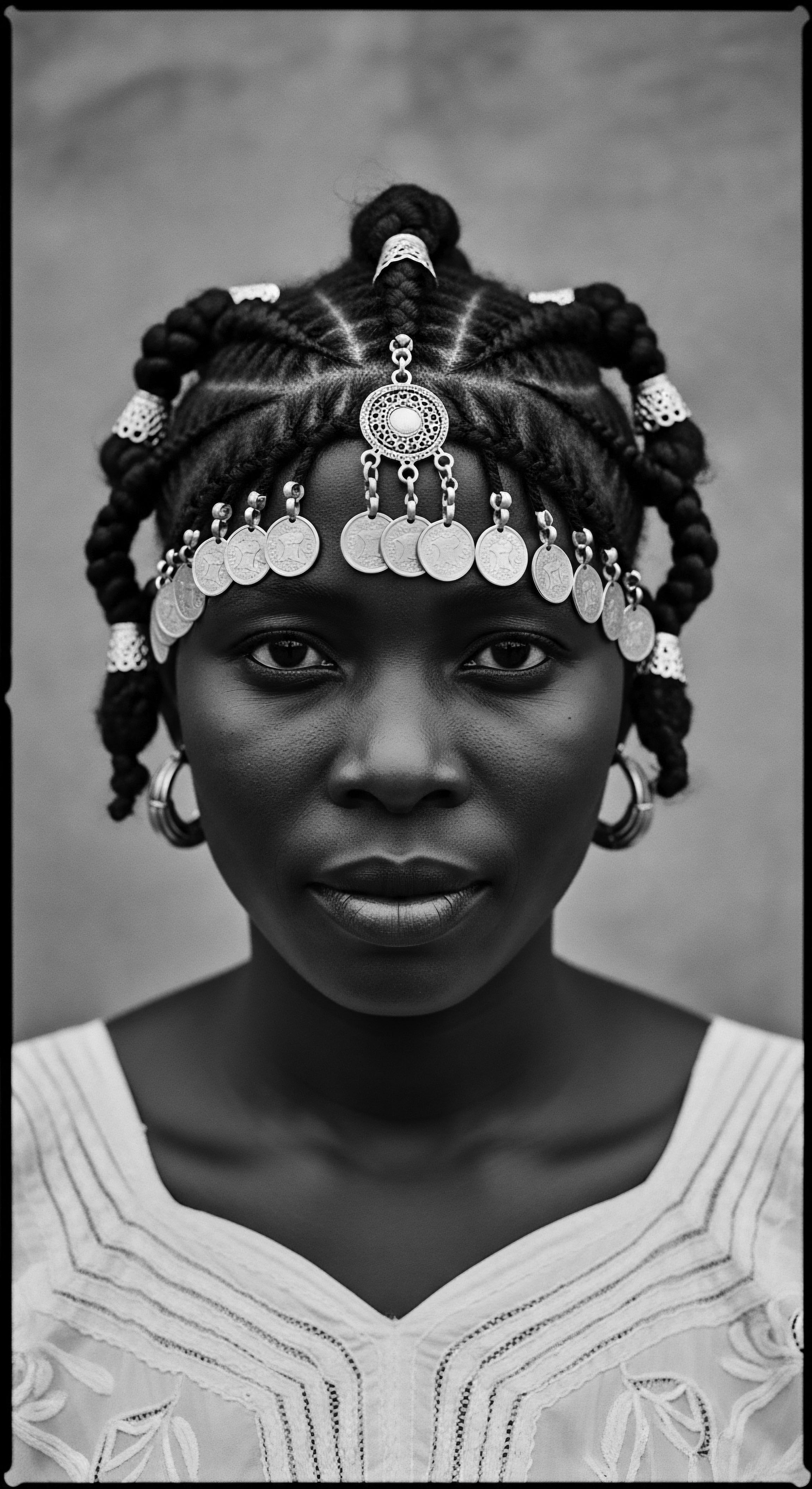
What Defines Textured Hair’s Ancestral Form?
The distinctive forms of textured hair, spanning from broad waves to tightly wound coils, possess a unique anatomy that sets them apart. Unlike straight or loosely wavy strands, textured hair springs from an elliptical or flattened follicle, shaping the very way the hair grows. This anatomical difference results in a strand that spirals as it emerges, creating bends and curves along its length.
These structural nuances account for the characteristic volume, spring, and sometimes, the delicate nature of textured hair. The coiled structure of hair, common among indigenous African populations, for example, offers natural protection against intense ultraviolet radiation, a biological adaptation to specific environmental conditions.
Historically, various societies understood and categorized hair based on its visible properties and its cultural significance. In ancient African civilizations, hair was often seen as a symbol of cultural identity, shaped into intricate braids, twists, and designs, often adorned with beads, cowrie shells, or feathers. This was not merely about aesthetic preference; hair communicated one’s social status, heritage, tribe, religious affiliation, wealth, and age.
The history of textured hair is a testament to its innate connection to identity and its enduring role as a cultural compass.
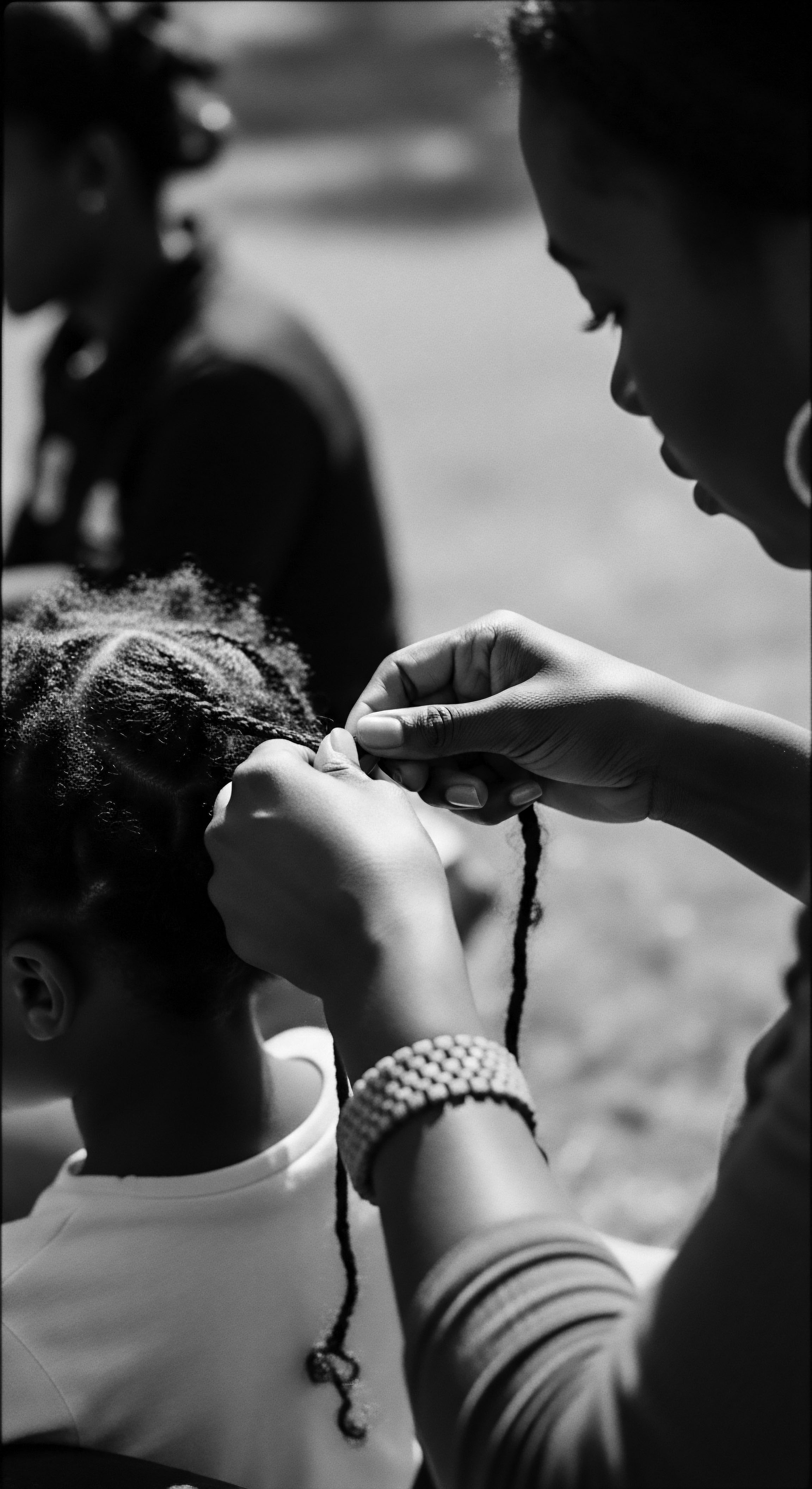
Language and the Living Lexicon of Hair
The words we use to describe textured hair carry their own legacy, sometimes reflecting deep respect, other times bearing the scars of historical subjugation. Pre-colonial African societies developed a rich lexicon for hair, describing its various forms, the tools used for its care, and the styles that conveyed a person’s life story. Yet, with the advent of the transatlantic slave trade, European enslavers deliberately stripped African captives of their cultural identity, which included shaving their heads, aiming to erase these visual markers of belonging and place. This act communicated a chilling message of erasure, forcing a violent disassociation from ancestral practices and the rich vocabulary that described them.
Words like “nappy,” once weaponized, have been reclaimed by many within the diaspora, transforming a derogatory term into one of defiant affection, symbolizing a return to intrinsic beauty and resilience. This reclamation of language mirrors the broader movement to reconnect with and celebrate textured hair heritage.
The continued growth cycle of hair, though universal, holds particular meaning within traditions that view hair as a living extension of self. Many indigenous cultures consider hair sacred, believing it holds knowledge and wisdom. Longer hair, in some beliefs, signifies greater wisdom, suggesting a deeper connection to ancestral knowledge and the earth. This reverence for hair’s vitality and its continuous journey from follicle to full length underscores its persistent symbolic power across diverse human experiences.
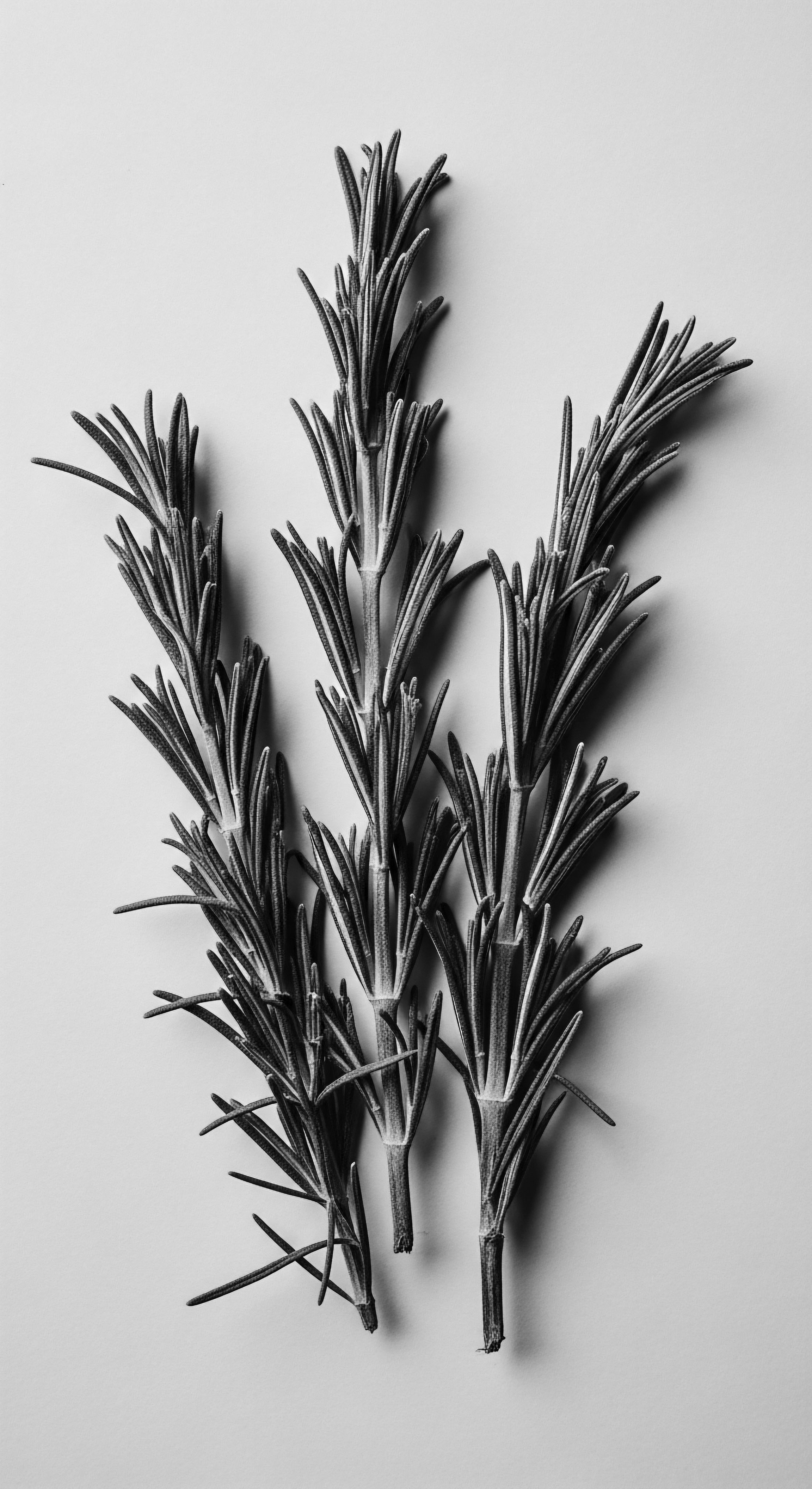
Ritual
From the foundational understanding of textured hair’s biological blueprint, our exploration moves to the lived experience ❉ the meticulous, often communal, acts of care and styling that form deeply rooted rituals. These practices, inherited from distant ancestors and adapted through centuries, stand as living testaments to creativity, resilience, and profound cultural memory. Hair rituals, especially for Black and mixed-race communities, are not merely cosmetic; they are a tender thread, weaving individuals into the larger fabric of their heritage, transmitting knowledge, fostering communal bonds, and serving as a quiet, yet powerful, declaration of identity.
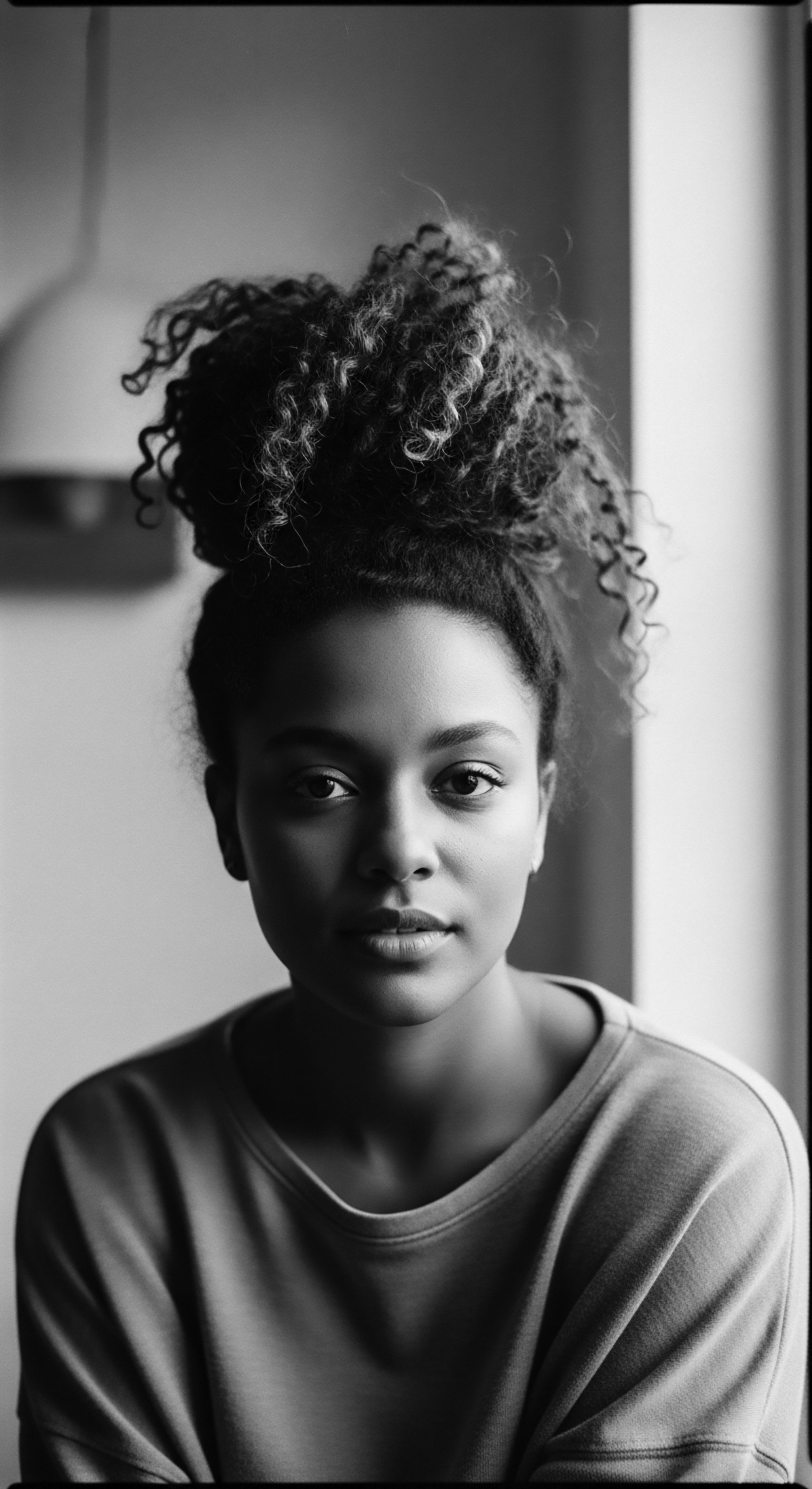
Ancestral Roots of Hair Care Rituals
In pre-colonial Africa, hair care was a significant social ritual, often taking hours or days to complete. This was time dedicated to bonding, storytelling, and the transmission of ancestral wisdom, often undertaken communally. The practices involved washing, combing, oiling, braiding, or twisting, and decorating hair with natural materials.
These rituals were passed from elder women to younger generations, ensuring the preservation of intricate techniques and their associated meanings. The continuity of these practices across the diaspora, despite immense historical disruption, speaks to their fundamental importance.
One striking historical example of hair rituals connecting to cultural identity and serving as an act of resistance comes from the transatlantic slave trade. During this brutal period, enslavers often shaved the heads of captured Africans upon their arrival in the Americas, a deliberate act intended to strip them of their identity and cultural ties. Yet, enslaved individuals found ways to maintain their traditions and express their identity through their hair. It is widely speculated that specific hairstyles, particularly cornrows, were used to create secret maps to freedom.
Enslaved women, sometimes rice farmers, would braid rice seeds into their hair as a means of survival and to preserve the agricultural heritage of their homelands. These braids could also conceal small tools or seeds to be used after escape, serving as vital aids on the Underground Railroad. This powerful case illustrates how hair rituals transformed into a profound form of resistance, a hidden language of defiance against oppression, deeply tied to the continuation of cultural survival and ancestral knowledge.
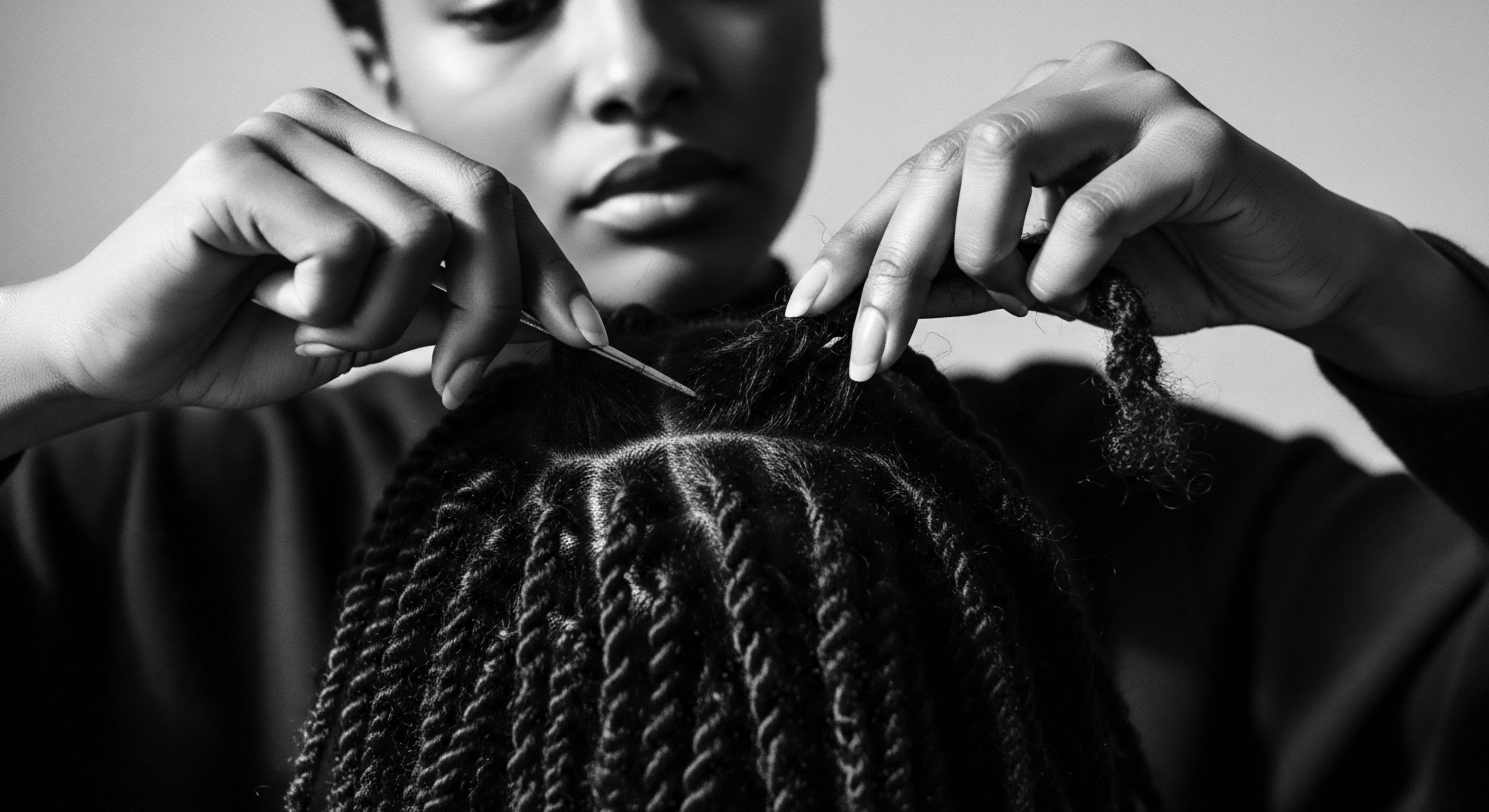
The Styling Arts as Heritage Markers
The spectrum of textured hair styles represents a rich cultural legacy, each style carrying historical weight and contemporary meaning. Braids, for example, have roots dating back 3500 BCE in Africa, with ancient rock paintings depicting women with cornrows. These patterns were not simply ornamental; they identified age, tribal affiliation, marital status, and social rank. The art of braiding was, and continues to be, a social activity, strengthening community bonds through shared hours of creation.
- Cornrows ❉ A style with deep African roots, dating back millennia, used for communication, status, and resistance.
- Locs ❉ Historically linked to spiritual intent, worn by Vedic deity Shiva’s followers in India (2500 BCE) and later popularized in the 1930s by Marcus Garvey’s followers, symbolizing spiritual connection and non-conformity.
- Bantu Knots ❉ Associated with the Zulu tribe of South Africa, symbolizing femininity and beauty.
The tools used in these practices also carry a history. From combs crafted from wood, bone, or metal by enslaved people, to natural oils like shea butter and coconut oil used for moisturizing and protection, these tools are extensions of ancestral ingenuity. Even simple headscarves, often made from pieces of clothing, became crucial for protecting hair and retaining moisture, a practice that continues today. Each tool and technique, from the precise parting for cornrows to the careful application of plant-based oils, speaks to a sophisticated historical understanding of hair care and styling.
Hair styling, born from ancestral traditions, functions as a visual language, sharing stories of identity and belonging.
The transformative power of styling extends beyond aesthetics. It offers a tangible connection to a collective identity, a way to reclaim narratives that have been historically marginalized. The deliberate choice to wear textured hair in traditional styles becomes an assertion of self and a celebration of heritage, a counter-narrative to Eurocentric beauty standards that have often sought to diminish its beauty.
| Historical Practice Intricate Braiding |
| Cultural Context Ancient Africa (e.g. 3500 BCE rock paintings of cornrows); communicated social status, tribal affiliation, marital status, and even served as maps for escape during slavery. |
| Contemporary Relevance Continues as a protective style and a powerful symbol of cultural pride and connection to ancestry; adapted for modern aesthetics while retaining historical significance. |
| Historical Practice Oiling and Natural Treatments |
| Cultural Context Pre-colonial Africa; used clay, oils, herbs, shells, beads, feathers, and metal for care and adornment, viewing hair as holding spiritual power. |
| Contemporary Relevance Many traditional ingredients like shea butter and coconut oil are central to contemporary natural hair care, reflecting an enduring respect for botanical knowledge. |
| Historical Practice Communal Grooming |
| Cultural Context Ancient African societies; hair care was a social event, fostering community bonds and knowledge transmission. |
| Contemporary Relevance Persists in many communities and families, particularly during extensive styling sessions, strengthening interpersonal connections and shared heritage. |
| Historical Practice These practices illustrate a continuous dialogue between past ingenuity and present identity, keeping the heritage of textured hair alive. |
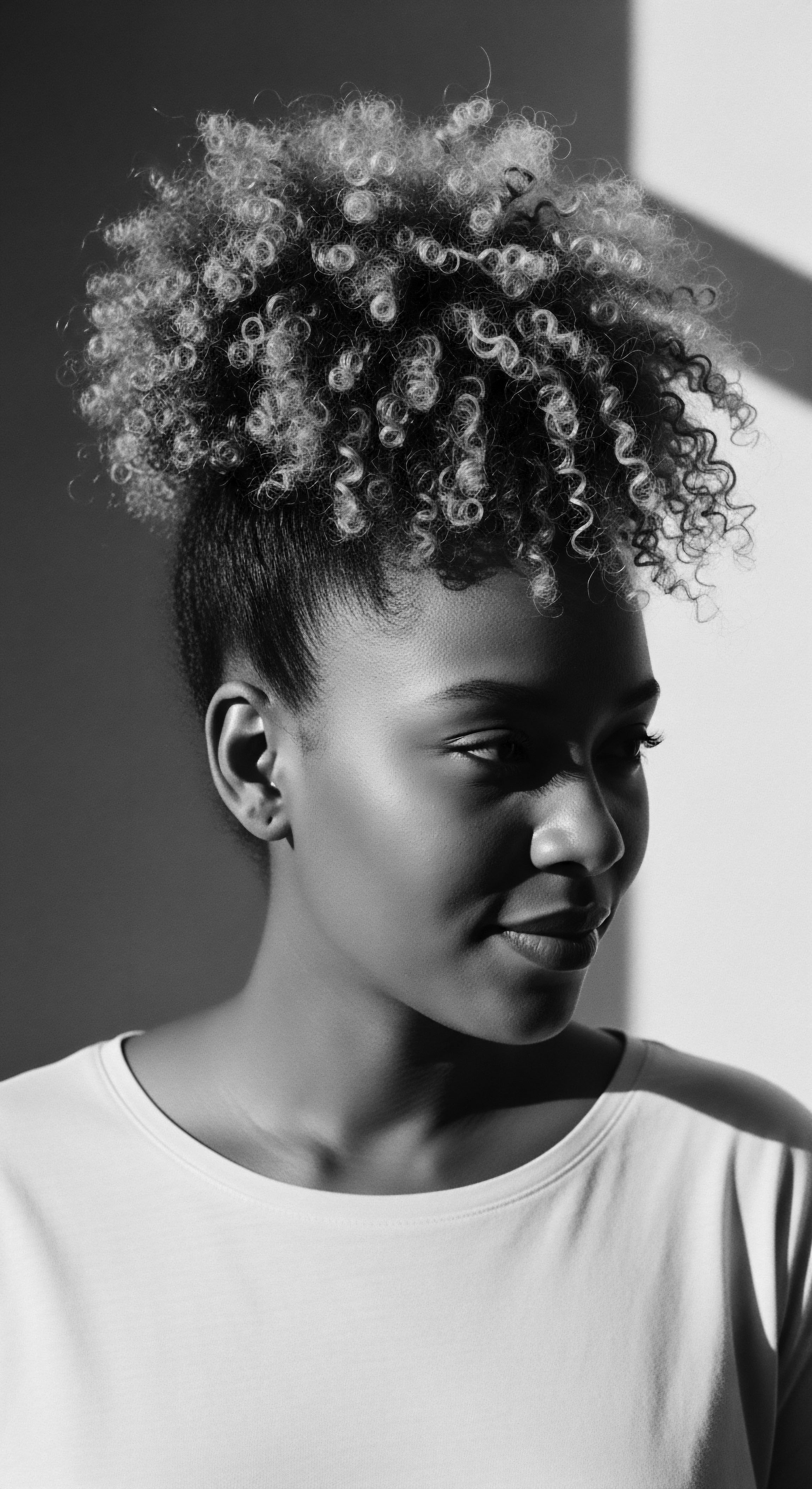
Relay
The journey of textured hair’s connection to identity extends beyond the tangible acts of styling and care. It enters a realm where scientific understanding intersects with ancestral wisdom, where the very biology of the strand becomes a testament to enduring cultural practice and historical resilience. This relay of knowledge, from ancient observations to modern scientific validation, underscores the profound, multi-dimensional role hair rituals play in shaping futures and cementing cultural continuity.
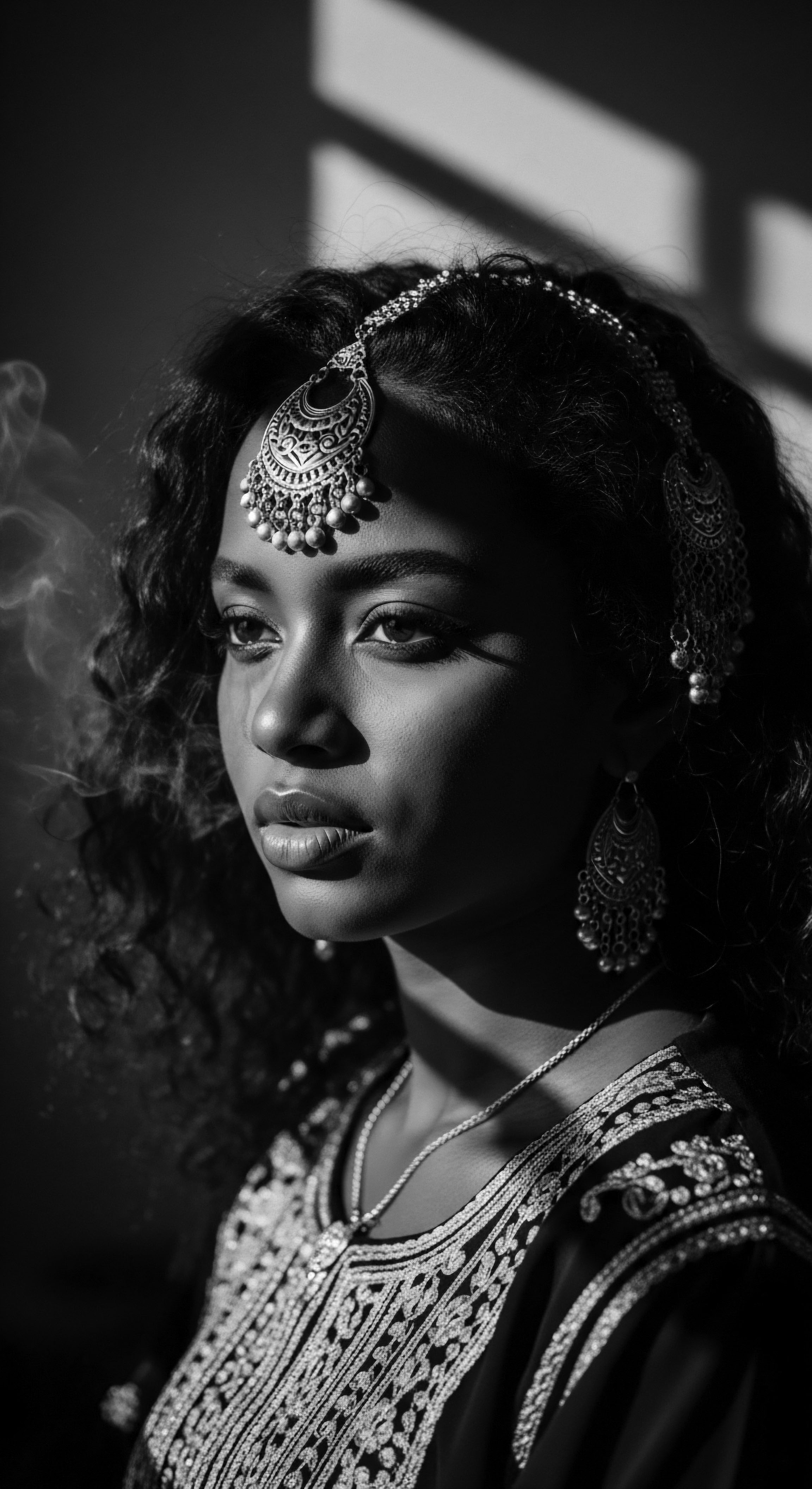
How Does Hair Biology Align with Traditional Practices?
For centuries, communities with textured hair developed sophisticated care routines long before modern science articulated the biological reasons for their efficacy. The unique structure of textured hair, with its elliptical follicle and helical growth pattern, contributes to its coiling. This coiling, while providing advantages like UV protection and temperature regulation, also means that natural oils produced by the scalp struggle to travel down the strand, leading to a predisposition for dryness.
Ancestral practices, however, instinctively addressed this. The frequent application of rich oils, butters, and plant-derived concoctions, like those used in ancient Africa, provided external lubrication and moisture. The tradition of protective styling, such as braiding or twisting, also directly mitigates environmental stressors and physical manipulation, preserving moisture and minimizing breakage. These are not mere coincidences; they are empirical observations codified into ritual, passed down as practical wisdom.
Modern trichology now validates these time-honored methods, explaining the molecular mechanisms behind their success. The science, in essence, provides a detailed explanation for what generations already knew from lived experience.
- Shea Butter ❉ A rich, natural fat from the shea tree, traditionally used in West African communities for its moisturizing properties, now scientifically recognized for its high content of fatty acids and vitamins.
- Coconut Oil ❉ Used across various African and diasporic communities, its molecular structure allows it to penetrate the hair shaft, providing deep conditioning.
- Plant Extracts ❉ Many traditional hair treatments incorporated local herbs and plants, which modern studies often reveal possess anti-inflammatory, antimicrobial, or strengthening compounds.
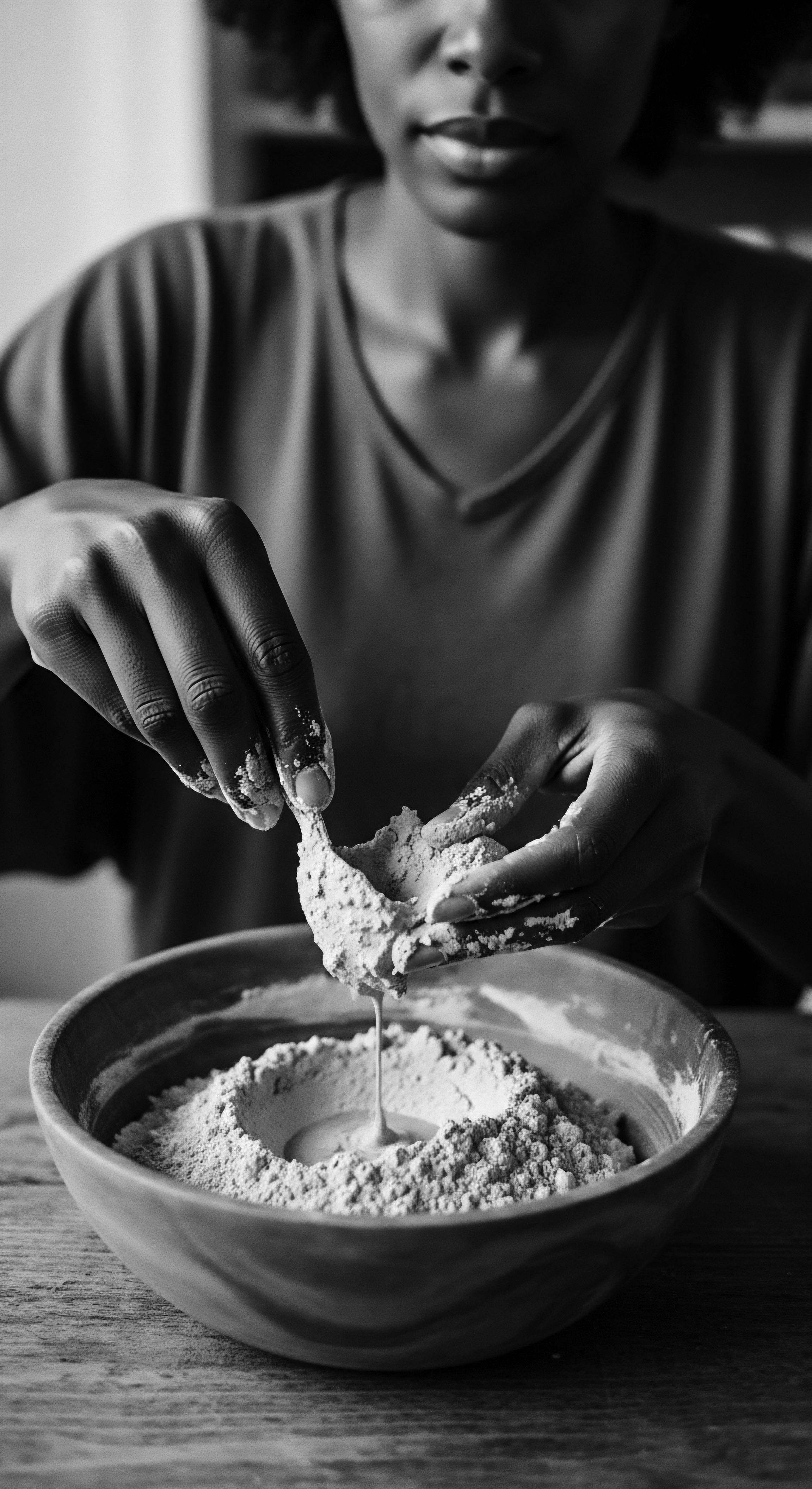
The Unbound Helix ❉ Hair as a Voice for Identity?
The choice to wear textured hair in its natural state, or in styles reflective of ancestral practices, became a powerful statement, especially during periods of societal oppression. The “Black is Beautiful” movement of the 1960s, for instance, saw a resurgence of natural hairstyles like the Afro, which became a potent symbol of Black pride, empowerment, and defiance against Eurocentric beauty standards. This era marked a collective rejection of the pressure to straighten hair, a pressure rooted in centuries of racial subjugation that deemed natural Black hair as “unprofessional” or “unacceptable.”
A recent study sponsored by Dove reported that Black women are 3.4 times more likely to be labeled unprofessional due to their hair presentation and 1.5 times more likely to be sent home for “unprofessional hair” (Dove, 2019). This statistic profoundly illustrates the persistent societal biases against textured hair and the ongoing need for protective legislation, such as the CROWN Act in the United States, which prohibits discrimination based on hair texture or style.
The act of choosing one’s hair style, therefore, extends beyond individual preference. It is a deeply political act, a re-alignment with ancestral roots, and a means of collective identity formation within the African diaspora. This self-definition through hair challenges external perceptions and cultivates a profound sense of self-acceptance.
The enduring political and social meaning of textured hair styles continues to shape perceptions and policies across communities.

Rituals of Shared History and Community
Hair care rituals have historically been, and continue to be, profoundly communal. The shared experience of braiding sessions, particularly in African and diasporic communities, functions as a space for intergenerational dialogue, storytelling, and social bonding. It is during these hours that cultural narratives are exchanged, familial histories recounted, and practical knowledge transferred.
The salon, or the home styling session, transforms into a sacred space—a nexus of tradition, care, and identity formation. Anthropological research reveals that these shared moments of grooming serve as a vital mechanism for sustaining cultural knowledges and practices across the diaspora.
The act of touch involved in hair grooming holds particular significance. For many cultures, including Native American tribes, hair is considered sacred, a physical extension of one’s spirit. Touching someone’s hair without permission can be seen as disrespectful, highlighting the deep personal and spiritual connection individuals have with their hair. This reverence for hair as a repository of spirit and identity further elevates hair rituals beyond mere physical maintenance; they become acts of spiritual communion, connecting individuals to their heritage and the broader ancestral realm.
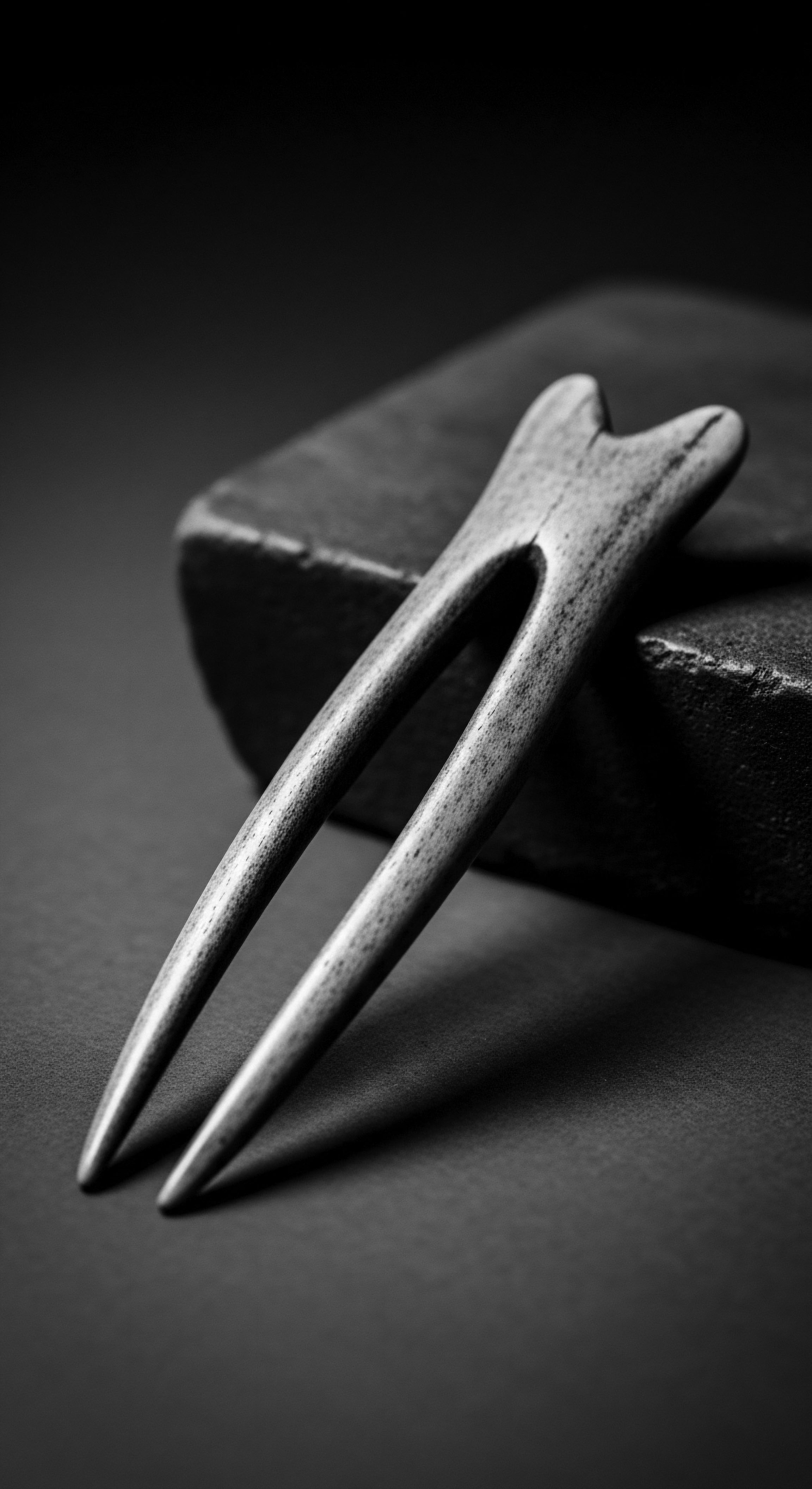
Reflection
As we conclude this exploration of how hair rituals connect to cultural identity, especially through the radiant lens of textured hair heritage, we stand before a vast, living library. Each strand, each coil, each braid is not merely a fiber; it is a meticulously kept scroll, inscribed with stories of resilience, echoes of ancestral wisdom, and declarations of identity that have transcended generations. The ‘Soul of a Strand’ ethos reminds us that our hair is a vibrant, breathing archive—a testament to ingenuity, adaptation, and an unwavering spirit.
The journey from understanding hair’s elemental biology to appreciating its profound role in shaping cultural narratives reveals a continuum of care and community. It speaks to the enduring legacy of those who, through the simple yet profound acts of styling and adornment, preserved a heritage in the face of immense adversity. The practices of washing, oiling, and braiding, once necessities of survival and expressions of status in ancient lands, continue to be acts of self-affirmation and connection to a lineage that refuses to be silenced.
In our modern era, the continued celebration and reclamation of textured hair stands as a powerful, collective statement. It is a declaration that the ancestral wisdom held within each curl is not only relevant but essential for holistic wellbeing. By understanding the scientific underpinnings of traditional care and the historical significance of various styles, we honor the past, ground ourselves in the present, and pave a path for future generations to cherish their unique follicular heritage. This ongoing dialogue between history, science, and spirit is a beautiful, unfolding narrative—a testament to the enduring power of hair as a beacon of cultural identity, a legacy lovingly relayed from one generation to the next, forever unbound.
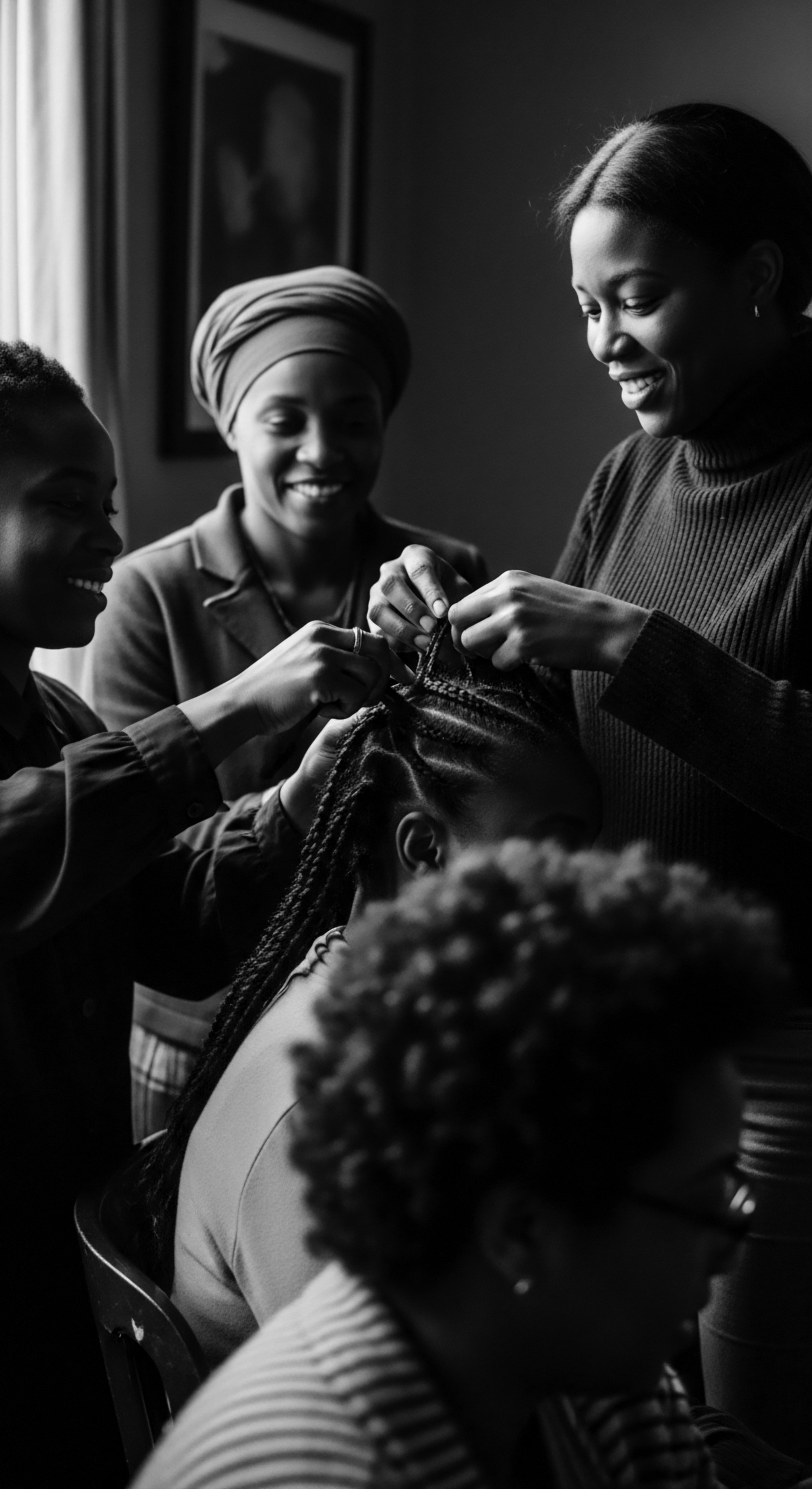
References
- Byrd, A. D. & Tharps, L. L. (2014). Hair Story ❉ Untangling the Roots of Black Hair in America. St. Martin’s Griffin.
- Johnson, T. A. & Bankhead, T. (2014). Hair It Is ❉ Examining the Experiences of Black Women with Natural Hair. The International Journal of Interdisciplinary Cultural Studies, 8(2), 87-99.
- Rosado, S. D. (2003). Hair in the African diaspora ❉ Exploring the cultural politics of hair among women of African descent. University of Florida.
- Sieber, R. & Herreman, F. (2000). Hair in African Art and Culture. Museum for African Art.
- Dove (2019). The CROWN Research Study ❉ The Impact of Hair Bias on Black Women in the Workplace .
- Tharps, L. L. (2002). Hair Story ❉ Untangling the Roots of Black Hair in America. St. Martin’s Press.
- Gordon, M. (2018). The Hairs of Your Head Are All Numbered ❉ Symbolisms of Hair and Dreadlocks in the Boboshanti Order of Rastafari. Journal of Pan African Studies, 12(8), 20+.
- Akanmori, M. (2015). Traditional African Hairstyles. International Journal of Humanities and Social Science, 5(5), 268-276.
- Omotos, A. (2018). The Cultural and Historical Significance of Hair in Ancient African Civilizations. Journal of Pan African Studies, 12(8), 10+.
